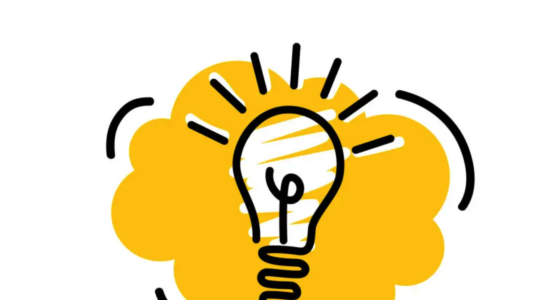The ADKAR Model: A Practical Framework for Change Management

The ADKAR Model is a structured change management framework that helps organizations and individuals navigate the challenges of transformation. Developed by Jeff Hiatt, the founder of Prosci, this model emphasizes the human side of change, focusing on guiding people through the emotional and practical adjustments necessary to adopt new behaviors, processes, or systems.
In this article, we’ll explore the ADKAR Model, break down its components, and provide actionable insights for applying it effectively.
What is the ADKAR Model?
The ADKAR Model is a goal-oriented framework used to manage change at both individual and organizational levels. It is built around five sequential building blocks that represent the steps necessary for successful change:
- Awareness
- Desire
- Knowledge
- Ability
- Reinforcement
The model emphasizes that change is not just a technical shift but a personal one, requiring focus on people’s readiness and willingness to adopt new practices.
The Five Elements of the ADKAR Model
1. Awareness of the Need for Change
Objective: Ensure individuals understand why change is necessary.
Key Questions:
- Why is this change happening?
- What are the risks of not changing?
Practical Tips:
- Communicate the vision and purpose behind the change clearly and frequently.
- Use data, stories, and analogies to illustrate the urgency and benefits of change.
- Address common misconceptions and provide transparency to build trust.
Example:
Before implementing new software, a company holds town hall meetings to explain how the system will reduce errors and improve efficiency.
2. Desire to Participate and Support the Change
Objective: Build motivation and willingness to embrace the change.
Key Questions:
- What’s in it for me?
- How will this impact my role?
Practical Tips:
- Identify and address individual concerns through one-on-one discussions.
- Highlight personal and organizational benefits of the change.
- Involve key influencers and leaders to advocate for the transformation.
Example:
A retail chain rewards employees with bonuses for adopting new inventory management systems, tying the change to personal benefits.
3. Knowledge on How to Change
Objective: Equip people with the information, training, and tools they need to succeed.
Key Questions:
- What skills or knowledge are required?
- Where can I access resources or support?
Practical Tips:
- Provide comprehensive training sessions, guides, and online resources.
- Break down complex changes into manageable steps.
- Offer mentorship or coaching for hands-on learning.
Example:
After introducing a new customer relationship management (CRM) platform, a company organizes interactive workshops and creates a knowledge hub with tutorials.
4. Ability to Implement Required Skills and Behaviors
Objective: Ensure individuals can translate knowledge into action.
Key Questions:
- Can I effectively apply what I’ve learned?
- What barriers might prevent success?
Practical Tips:
- Conduct simulations, role-playing, or practice sessions to build confidence.
- Assign experienced mentors to provide guidance during the transition.
- Address barriers such as outdated equipment or unclear workflows.
Example:
A hospital adopts a new electronic medical records system and schedules shadowing sessions with IT experts to ensure staff can navigate the software confidently.
5. Reinforcement to Sustain the Change
Objective: Ensure the change sticks and becomes part of the organization’s culture.
Key Questions:
- How do we prevent reverting to old habits?
- What rewards or recognition reinforce the new behaviors?
Practical Tips:
- Celebrate early wins to build momentum.
- Monitor progress through regular check-ins and feedback loops.
- Integrate the change into performance evaluations and reward systems.
Example:
A company tracks metrics to measure the adoption of a new workflow and publicly recognizes teams that achieve the highest compliance rates.
Why Use the ADKAR Model?
- Focuses on People: Prioritizes individual readiness and engagement during change.
- Clear Structure: Provides a step-by-step approach to managing transitions.
- Applicable to All Levels: Works for both organizational and individual change initiatives.
- Improves Adoption Rates: Ensures employees are equipped and motivated to embrace change.
Applications of the ADKAR Model
1. Organizational Change
When a company introduces new systems, workflows, or policies, the ADKAR Model ensures employees understand and embrace these changes.
Example:
A bank uses ADKAR to guide employees through adopting a digital-first customer service approach.
2. Personal Change
ADKAR can help individuals manage personal transformations, such as adopting a healthier lifestyle or transitioning to a new career.
Example:
A professional uses ADKAR to build awareness of the need for better time management, develop knowledge of productivity tools, and reinforce habits with daily routines.
3. Project Management
Project managers can integrate ADKAR into their change management plans to ensure smooth transitions and stakeholder buy-in.
Example:
An IT department uses ADKAR to introduce cybersecurity protocols, focusing on awareness campaigns and ability-building workshops.
Challenges of Implementing the ADKAR Model
- Resistance to Change: Individuals may be unwilling to move beyond their comfort zones.
- Insufficient Communication: Poor communication can lead to misunderstandings or lack of buy-in.
- Time and Resources: Effective implementation requires significant investment in training and support.
- Lack of Reinforcement: Without ongoing reinforcement, old habits may resurface.
Conclusion
The ADKAR Model is a powerful framework for managing change in organizations and individuals. By addressing the psychological and practical barriers to transformation, ADKAR ensures that change is not only implemented but sustained.
Whether you’re rolling out a new technology, reimagining processes, or fostering personal growth, the ADKAR Model provides a clear, actionable roadmap to guide the journey. Embrace its principles, and you’ll be well on your way to driving meaningful, lasting change.







